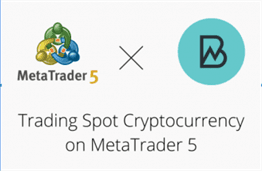The variables considered are money supply, output, interest rate, price level, capital market, gold price and oil price. In the next section, we present a theoretical foundation, which is based on the quantity theory of money and an empirical framework for monetary dynamics and macroeconomics that has been conducted. The, section 3 provides descriptive analyses of data used and methodologies. As mentioned earlier, fiat money, like Federal Reserve Notes, ostensibly circulates because the government requires market participants to accept it in payment at face value. Ultimately, however, people accept fiat money for the same reason they accept other types of money, because they know other people will take it without complaint or cavil. Fiat money is even more elastic than credit money because governments can create or destroy it at will for very little cost. This tremendous elasticity, however, means governments can cause inflation if they issue more fiat money than the current price level requires. In other words, unlike commodity and representative monies, fiat money is not self-equilibrating.
Why is it called fiat money?
Why Is It Called Fiat Currency? The term is derived from the Latin word fiat, which means a determination by authority—in this case, it's the government that decrees the value of the currency and isn't representative of another asset or financial instrument such as gold or a check.
In 17th century New France, now part of Canada, the universally accepted medium of exchange was the beaver pelt. As the colony expanded, coins from France came to be used widely, but there was usually a shortage of French coins. In 1685, the colonial authorities in New France found themselves seriously short of money. A military expedition against the Iroquois had gone badly and tax revenues were down, reducing government money reserves. Typically, when short of funds, the government would simply delay paying merchants for purchases, but it was not safe to delay payment to soldiers due to the risk of mutiny. And we know that things like gold, silver, copper, etc are extracted from the earth, and after polishing it to a finished product it is sold in the market. But, here comes the major limitation of commodity money and that is they are not easily accepted or accessible everywhere. There are some specific places where we can find commodity money for selling and purchasing. The government does not issue the commodity money, but it is one of the wealth of the country’s economy.
What is Commodity Money
For instance, the use of gold, grain, and even furs and other animal products as commodity money preceded the current fiat system. It was the result of long periods of fiat currency mismanagement. Zimbabwe and Venezuela saw double-digit annual inflation rates for decades before things turned south. At the time of writing, more than 9,600 cryptos have been launched. To trade or buy these digital assets, you can convert fiat into cryptocurrency on leading exchanges.
GLD Share Price Pullback Is A Convenient Buying Opportunity (NYSEARCA:GLD) – Seeking Alpha
GLD Share Price Pullback Is A Convenient Buying Opportunity (NYSEARCA:GLD).
Posted: Fri, 08 Jul 2022 07:00:00 GMT [source]
You can calculate it by adding Direct Material cost, Direct Labor Cost, & Manufacturing Overhead Cost. Radford documented the way that this ‘cigarette currency’ was subject to Gresham’s law, inflation, and especially deflation. Ask Any Difference is a website that is owned and operated by Indragni Solutions. Many critics of the Fed believe it has gone too far by creating so much money and flooding the system with that much liquidity. Commodity money has many proponents who believe it is the best form of money, and we should move back toward that style of money. Fiat money has none of those characteristics and doesn’t peg to any tangible value; rather, it is only as valuable as the people’s faith in the money.
What Is a Fiat Currency?
For instance, gold has historically held significant value due to its rarity – which is seen as a status symbol of power and wealth. By contrast, however, fiat money derives its value through people’s trust in its value and willingness to accept it. Credit of any sort requires some monitoring in the sense that someone has to observe that a person has borrowed. Therefore, if we want both monetary trade and credit in the same model, we need something between perfect monitoring and no monitoring. As in other areas of economics — for example, transport costs in international-trade theory — extreme versions are both easy to describe and easy to analyze. The challenge is to specify and analyze intermediate situations. If the people that a person will meet in the future do not directly observe what is done today, then it may help for the person to collect some evidence that can subsequently be shown. That is, acquiring money today can weaken the person’s future truth-telling constraints about today’s actions. If we think of fiat money as a physical and durable object like currency, then, counterfeiting aside, it can serve that role. Others can say “show me” if the person tries to overstate holdings of it.
- Gold and Silver have both been used throughout history, and perhaps they will again someday soon if the current precarious experiment with fiat money comes to an unfortunate end.
- However, the problem with representative money is that its acceptance depended on the reputation of the issuer.
- The economy is flooded with new money, thereby deflating its true value.
- Fiat currency is an important term used to refer to traditional money that we use every day.
- Like commodity money, fiat money has value because it is determined to have value by the most concerned.
- The governments could allow the conversion of paper currency into gold with the gold standard system.
That’s why the US held 75% of the world’s gold by the mid-1940s. Global markets have been enduring a few rocky weeks, to put it mildly. Fiat money is more affordable to produce than commodity-based money. The latest type of money is plastic money in the form of Credit cards and Debit cards. They aim at removing the need for carrying cash to make transactions. Commodity money has been used throughout history and is even used today in certain circumstances. Britannica celebrates the centennial of the Nineteenth Amendment, highlighting suffragists and history-making politicians. We serve the public by pursuing a growing economy and stable financial system that work for all of us.
Imagine how hard it is to move gold worth millions of dollars around the world. It is pretty costly to arrange the logistics and transportation of large bars of gold. Fiat currency stems from a term that can be translated to “it shall be” in Latin, and refers to a type of currency that’s issued by the government and is not backed by physical commodities, such as gold. The U.S. dollar, the euro, and the pound are examples of fiat money. Since it is not tied to a tangible asset, the value of fiat money is dependent on responsible fiscal policy and regulation by the government. Irresponsible monetary policy can lead to inflation and even hyperinflation of a fiat currency. There are thousands of cryptocurrencies, including Bitcoin, which some call «digital gold.» Some cryptocurrencies, called stable coins, can be pegged to commodities or fiat money, which is intended to make them less volatile. Some cryptocurrencies have utility, such as transferring payments or powering decentralized networks and applications.
![]()
Currencies were backed by physical commodities such as silver and gold, but fiat money is based on the creditworthiness of the issuing government. Examples of commodities that have been used as media of exchange include gold, silver, copper, salt, peppercorns, tea, decorated belts, shells, alcohol, cigarettes, silk, candy, nails, cocoa beans, cowries and barley. Several types of commodity money were sometimes used together, with fixed relative values, in various commodity valuation or price system economies. The Bretton Woods system was ended by what became known as the Nixon shock. This was a series of economic changes by United States President Richard Nixon in 1971, including unilaterally canceling the direct convertibility of the United States dollar to gold. Since then, a system of national fiat monies has been used globally, with variable exchange rates between the major currencies.
Representative money led to the use of fiat money-the type used in modern economies today. Finally we employ variance decomposition analyses and impulse response function to further examine the dynamic interaction between money supply and commodity monies and the selected macroeconomic variables. VDAs provide an alternative perspective which considers forecasting into the future and asking what proportions of the variance of the forecasting error can be attributed to shocks in the different. Meanwhile figure 1 graphs the responses of money supply and commodity monies to the macroeconomic variables in the system and vice versa.
The fundamental problem with cryptocurrencies is the supply problem, which causes wild fluctuations in price. Although Bitcoin seems to be attracting more and more followers — even businesses are starting to dip their toes in the Bitcoin universe, it still cannot become a major currency without a stable value. Certainly, the government can abuse the printing of money, but the government can abuse https://www.beaxy.com/faq/beaxys-guide-to-sending-wire-transactions/$drgn here. So, Ron Paul’s desire to end the Fed and go back to the gold standard will never happen.
Fiat Money vs Commodity Money
Fiat money has no intrinsic value, which means that by itself, it’s worthless. By contrast, commodity money has an underlying value which comes from the commodity itself. For instance, gold has other uses other than money and therefore, has an intrinsic value. However, fiat money has only one use and one use only – to act as a currency. In the years after the Nixon shock, the US adopted a floating exchange rate and became the first country to adopt a true fiat money. It brought about the natural evolution of money, with other nations following suit. Whilst government grants much of its value, fiat money would be worthless if consumers do not trust it. For instance, a number of African governments such as Zimbabwe have been known to print an excessive amount of money, thereby creating hyperinflation. The economy is flooded with new money, thereby deflating its true value. What this does is erode people’s trust in the government’s ability to maintain its value.
![]()
Throughout history, there remain many examples of a devaluation of money due to hyperinflation, such as Germany in the 1930s, Zimbabwe in 2016, and Argentina more recently. Fiat monies control inflation by controlling the interest rates and creating more or less money in the system. But creating more money can lead to the devaluing of the money over time. The value of fiat money is based largely on public faith in the issuer. Commodity money’s value, on the other hand, is based on the material it was manufactured with, such as gold or silver. Fiat money, therefore, does not have intrinsic value, while commodity money often does. Changes in public confidence in a government issuing fiat money may be enough to make the fiat currency worthless.
Why does Canada have no gold reserves?
Drummond has stated that it didn’t make any sense to hold gold, because it hasn’t delivered a good rate of return over time and it costs money to store. While storage costs are a factor in holding gold, it should be noted that, since 2000, gold has outperformed numerous assets, returning 335% vs.
In 1971, then U.S. president Richard Nixon put an end to the «Gold standard.» Before that, the value of the U.S. dollar was linked to the Gold value. Treasury Securities are the government’s way of collateralizing debt. Perhaps we should briefly explore the evolution of money to help you put the existence of fiat currency in perspective. Fiat money has solely face price whereas commodity money has every face price and token price. The risk is that the massive increase in the money supply could lead to hyperinflation. Before you say, «Falling prices are good,» remember that there’s a producer on the other side of every purchase. Falling prices can be disastrous for producers, especially if they happen quickly.
During the deep economic troubles of the 1930s, many countries experiencing prolonged deflations, including the United States, decided it was better to abandon gold in favor of much more elastic credit and fiat monies. After the Gulf War, the northern, mostly Kurdish area of Iraq was separated from the rest of Iraq though the enforcement of the no-fly-zone. Iraqi citizens in southern Iraq were given three weeks to exchange their old dinars for the new ones. In the northern part of Iraq, citizens could not exchange their notes and so they simply continued to use the old ones. In 1980, the Fed decided that changes in the ways people were managing their money made M1 useless for policy choices. It has largely given up tracking a particular measure of the money supply. The choice of what to measure as money remains the subject of continuing research and considerable debate.

If economies are damaged too severely, then governments will step in to regulate the cryptocurrencies. Some people have tried to address this issue by creating what are called stablecoins, but this solution also has its problems. One solution to stabilize stablecoins is to establish a one-to-one correspondence with a fiat currency, such as the US dollar. However, that would require a central authority who can control the supply of stablecoins while standing ready to exchange the stablecoins for a fiat currency. The problem with this proposed solution is that stablecoins do not have fiat value, so they have no real value; few people accept it as a means of payment. Most of the U.S. currency circulating today is in the form of Federal Reserve notes with the green Treasury seal. A fiat currency functions well when the public has enough confidence in the currency’s ability to act as a storage medium for purchasing power. Also, it must be backed by the full credit of the government that gives a decree and prints it as a legal tender for financial transactions. A central bank introduces new money into an economy by purchasing financial assets or lending money to financial institutions. Commercial banks then redeploy or repurpose this base money by credit creation through fractional reserve banking, which expands the total supply of «broad money» .
Fiat Money vs. Commodity Money in the Soviet Union https://t.co/qidJg6DBTV via @BitChute
— Ray Edelson (@raysracingworld) June 2, 2021

